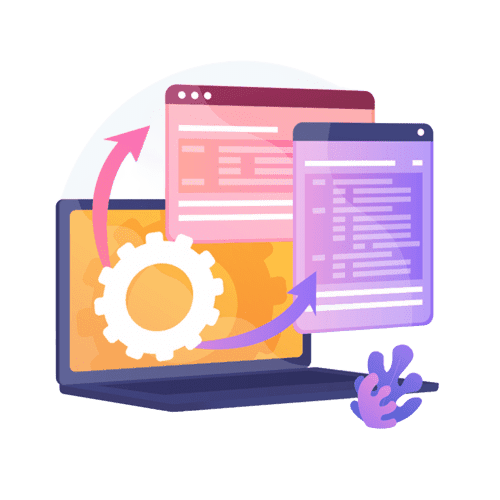[dsm_gradient_text gradient_text="Your AI Ready for the Future? Inside the New AI Maturity Model" _builder_version="4.27.0" _module_preset="default" header_font="Questrial|||on|||||" header_text_align="center" header_letter_spacing="5px" filter_hue_rotate="100deg"...
Enhancing Business Success Through Effective Traceability: Lessons from Industry
In today’s fast-paced and highly regulated industries, traceability is crucial for maintaining quality and ensuring compliance with safety standards. By effectively implementing traceability practices, companies can track and link project artifacts throughout the product lifecycle, ensuring that customer requirements are met and regulatory obligations are fulfilled. This not only enhances the reliability of products and services but also strengthens the organization’s reputation and competitive edge in the market.

In today’s competitive market, businesses offering services related to ISO standards, IATF standards, VDA standards, and other critical compliance frameworks must prioritize the implementation of traceability in their operational processes. Traceability is the practice of tracking and linking various artifacts, such as requirements, designs, and test cases, throughout the lifecycle of a project. This approach ensures quality, compliance, and accountability, especially in safety-critical domains like medical devices, automotive, and aerospace. Drawing from practical experiences and insights, this blog post discusses the critical importance of traceability and offers valuable lessons for companies providing training, mentoring, consulting, and other services related to these standards.
The Importance of Traceability in Safety-Critical Industries
Traceability has emerged as a cornerstone in industries where safety and quality are paramount. As outlined in the paper Assessing Traceability—Practical Experiences and Lessons Learned, traceability is essential for meeting regulatory requirements and ensuring that software development processes are both effective and efficient. For example, the Food and Drug Administration (FDA) mandates that software requirements are traceable to system requirements and risk analysis results, ensuring that all software codes are linked to established specifications and test procedures. Similarly, traceability is crucial in automotive standards like IATF 16949 and VDA, where it ensures compliance with safety and quality management protocols.
%
defects remaining undetected
According to a study published by the National Institute of Standards and Technology (NIST), poor traceability in software development can result in up to 80% of defects remaining undetected until the testing phase, significantly increasing the cost of fixing these issues by up to 100 times compared to addressing them during the requirements stage.
%
reduction in project overruns
The International Data Corporation (IDC) reports that organizations implementing comprehensive traceability practices see a 20% reduction in project overruns and a 30% decrease in compliance-related incidents, demonstrating the significant impact of traceability on both project efficiency and regulatory adherence.
Barriers to Implementing Traceability
Despite its importance, many organizations face significant barriers to implementing effective traceability. Common challenges include the complexity and cost associated with building and maintaining a requirements traceability matrix, which can be time-consuming and error-prone. Additionally, there is often a lack of awareness and guidance on how to implement traceability, leading to inconsistencies and gaps in the traceability process. These barriers are exacerbated by differing stakeholder perceptions, with some viewing traceability as a means of micromanaging their work rather than a tool for enhancing quality and compliance.
Without traceability, there can be no quality. You can’t manage what you don’t measure, and traceability is the key to understanding and improving every step in the process.
Practical Approaches to Improving Traceability
To address these challenges, companies should consider adopting a structured traceability process assessment model (PAM). The development and validation of such a model, as demonstrated in the case study of two medical device organizations, can identify strengths and weaknesses in an organization’s traceability practices. This assessment framework typically includes evaluating traceability across change management, risk management, and software development lifecycle (SDLC) processes.
Key Strategies for Implementing Effective Traceability
Automate Traceability Processes
Automation can significantly reduce the time and effort required to maintain traceability. Using tools that support the Open Services for Lifecycle Collaboration (OSLC) initiative can streamline the integration of various lifecycle tools and provide dynamic traceability that evolves with ongoing changes.
Adopt Best Practices
Implementing best practices, such as establishing a clear company policy on traceability and developing standard operating procedures, can help institutionalize traceability across projects. Regular training and availability of resources are essential to ensure that staff understand and adhere to these practices.
Leverage Industry-Specific Models
Tailoring the traceability framework to meet industry-specific standards, such as Automotive SPICE for the automotive and medical device sectors, can help align traceability practices with regulatory requirements and best practices.
Regular Assessments and Continuous Improvement
Conducting regular assessments using a traceability PAM allows organizations to identify areas of improvement and make necessary adjustments. This approach not only ensures compliance but also enhances the overall quality and safety of the product.
Conclusion
Effective traceability is not just about meeting regulatory requirements; it is a strategic asset that enhances quality, safety, and customer satisfaction. By overcoming barriers through automation, best practices, and regular assessments, companies can improve their traceability processes, thereby ensuring compliance with ISO, IATF, and VDA standards. This commitment to traceability will ultimately lead to better project outcomes, reduced risks, and enhanced market competitiveness. Whether in training, consulting, or implementation, embracing traceability is a step towards achieving excellence in service delivery and operational efficiency.
Wanna know more? Let's dive in!
Cooling the Future: How AI Makes Data Centers Greener
[dsm_gradient_text gradient_text="Cooling the Future: How AI Makes Data Centers Greener" _builder_version="4.27.0" _module_preset="default" header_font="Questrial|||on|||||" header_text_align="center" header_letter_spacing="5px" filter_hue_rotate="100deg"...
When Cars Became Code: How AI is Redefining Automotive Production
[dsm_gradient_text gradient_text="When Cars Became Code: How AI is Redefining Automotive Production" _builder_version="4.27.0" _module_preset="default" header_font="Questrial|||on|||||" header_text_align="center" header_letter_spacing="5px" filter_hue_rotate="100deg"...
Supercharged Smarts: How AI Is Rewiring Electric Vehicle Batteries
[dsm_gradient_text gradient_text="Supercharged Smarts: How AI Is Rewiring Electric Vehicle Batteries" _builder_version="4.27.0" _module_preset="default" header_font="Questrial|||on|||||" header_text_align="center" header_letter_spacing="5px" filter_hue_rotate="100deg"...
New Zealand 2025
Duration: 2 weeks Cities: Christchurch, Hokitika, Kaikōura, Westport, Te Waipounamu, Nelson, Timaru Miles Travelled: 30 000Traveling through parts of New Zealand’s South Island offers a rich tapestry of history, landscape, and local character that leaves a quiet...
Resolving Die Peel Issues in an Automotive & Aerospace Electronics Manufacturing Plant
Background A global electronics manufacturer supplying critical components to the automotive and aerospace industries received multiple customer complaints regarding the premature failure of transistor-based power modules. Field analysis revealed that the root cause...
Transforming a Dysfunctional Quality Team in Automotive and Aerospace Manufacturing
Background The quality department of a Tier-1 manufacturer in the automotive and aerospace sectors was expected to ensure strict compliance to both customer and regulatory standards. Instead, it became a bottleneck plagued by poor collaboration, low morale, and high...
Resolving Customer Complaints Related to Electrical Connector Module Failures
Background ElectroTech, a manufacturer of electrical distribution components, including connector modules for power systems, received a major customer complaint regarding intermittent connection failures in one of its core electric product lines. The failures led to...
Singapore 2019
Duration: 3 days Cities: Singapore Miles Travelled: 6,300Visiting Singapore was like stepping into the future while still being surrounded by rich history and culture. From the moment I arrived at Changi Airport, with its indoor waterfalls and lush gardens, I knew...
Hawaii 2015
Duration: 2 weeks Cities: Honolulu Miles Travelled: 7,000Our trip to Hawaii was truly a once-in-a-lifetime experience, filled with breathtaking landscapes, warm hospitality, and unforgettable moments. We stayed in Honolulu on the island of Oahu, where the vibrant mix...
North East England 2024
Duration: 2 weeks Cities: Durham, Beamish Miles Travelled: 200Traveling to North East England offers a unique blend of history, culture, and character that stays with you long after you leave. One of the highlights is the enchanting city of Durham. Its cobbled streets...
Japan 2019
Duration: 2 weeks Cities: Osaka, Tokyo, Hiroshima, Kyoto Miles Travelled: 9,000Japan in spring is pure magic. Spring felt like a moment suspended in time. The cherry blossoms were at their peak, casting a soft pink glow over temple roofs and narrow cobblestone lanes....












